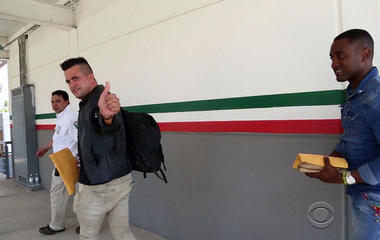Primer: In 2013 – US and Iranian officials have been meeting secretly in Oman for the past year with the help of Sultan Qaboos
WASHINGTON (AP) — With their destination and mission among America’s closest guarded secrets, the small group of officials hand-picked by President Barack Obama boarded a military plane in March.
The travel plans of the U.S. diplomats and foreign policy advisers were not on any public itineraries. No reception greeted them as they landed. But awaiting the Americans in the remote and ancient Gulf sultanate of Oman was the reason for all the secrecy: a delegation of Iranians ready to meet them.
It was at this first high-level gathering at a secure location in the Omani capital of Muscat, famous for its souk filled with frankincense and myrrh, that the Obama administration began laying the groundwork for this weekend’s historic nuclear pact between world powers and Iran, The Associated Press has learned.
FNC: DUBAI, United Arab Emirates – Oman said Monday it accepted 10 inmates from the U.S. prison at Guantanamo Bay ahead of President Barack Obama leaving office, part of his efforts to shrink the facility he promised to close.
There was no immediate word from the U.S. Defense Department about the transfer.
Oman’s Foreign Ministry said in a statement carried by the state-run Oman News Agency that it had accepted the prisoners at Obama’s request. It did not name the prisoners.
Omani and U.S. military officials did not immediately respond to a request for comment from The Associated Press.
The sultanate of Oman, on the eastern edge of the Arabian Peninsula, previously accepted 10 Guantanamo prisoners from Yemen in January 2016. Oman also took another six in June 2015. Meanwhile, Oman’s neighbor Saudi Arabia took four prisoners on Jan. 5 and the United Arab Emirates took 15 prisoners in the largest-single transfer during Obama’s administration on Aug. 15.
Oman, ruled by Sultan Qaboos bin Said since 1970, has served as an interlocutor between the West and Iran. It also has negotiated a number of prisoner releases in recent years for Western countries.
Yemen, the Arab world’s poorest country, remains in the grips of a civil war and a Saudi-led military offensive against the rebels — making returning Guantanamo inmates there impossible.
Days earlier, authorities said 19 of the remaining 55 prisoners at the U.S. military base in Cuba were cleared for release and could be freed in the final days of Obama’s presidency.
It was part of an effort by Obama to shrink the prison since he couldn’t close it.
U.S. President-elect Donald Trump said during his campaign that he not only wants to keep Guantanamo open but “load it up with some bad dudes.”
The U.S. began using its military base on southeast Cuba’s isolated, rocky coast to hold prisoners captured during the Afghanistan invasion, bringing the first planeload on Jan. 11, 2002, and reaching a peak 18 months later of nearly 680.
There were 242 prisoners when Obama took office in 2009, pledging to close what became a source of international criticism over the mistreatment of detainees and the notion of holding people indefinitely, most without charge.
Obama was unable to close Guantanamo because of Congressional opposition to holding any of the men in the United States. That ultimately became a ban on transferring them to U.S. soil for any reason, including trial, making the failure to close the detention center part of his legacy.
The majority of Guantanamo prisoners released have been sent to Afghanistan, Saudi Arabia and Pakistan.
**** This is only a temporary home for them.
Muscat: Ten prisoners from the Guantanamo Bay facility in Cuba have been released and will “temporarily reside” in Oman, the Ministry of Foreign Affairs has announced.
The 10 have been released from Guantanamo Bay and received by the Sultanate at the request of the US government, a senior official at the ministry said in a statement earlier today.
The official said that the 10 prisoners were pardoned following the directives of His Majesty the Sultan in cooperation with the United States government. The 10 will reside temporarily in the Sultanate which considers the release of the prisoners a humanitarian issue.
The statement, carried by the government run Oman News Agency, states: “An official source at the Ministry of Foreign Affairs said by following Royal Directive issued by His Majesty the Sultan to meet the American Government’s request to settle the cases of prisoners in Guantanamo Bay, considering their humanitarian conditions, 10 people who have been pardoned arrived to the Sultanate for a temporary stay.”
**** Those released are:
Ghaleb Nassar Al Bihani, Mustafa Abd al-Qawi Abd al-Aziz Al-Shamiri, Karim Bostam, Abdul Sahir, Musab Omar Ali Al-Mudwani, Hail Aziz Ahmed Al-Maythali, Salman Yahya Hassan Mohammad Rabei’i, Mohammed Al-Ansi, Muhammad Ahmad Said Haider, and Walid Said bin Said Zaid.


